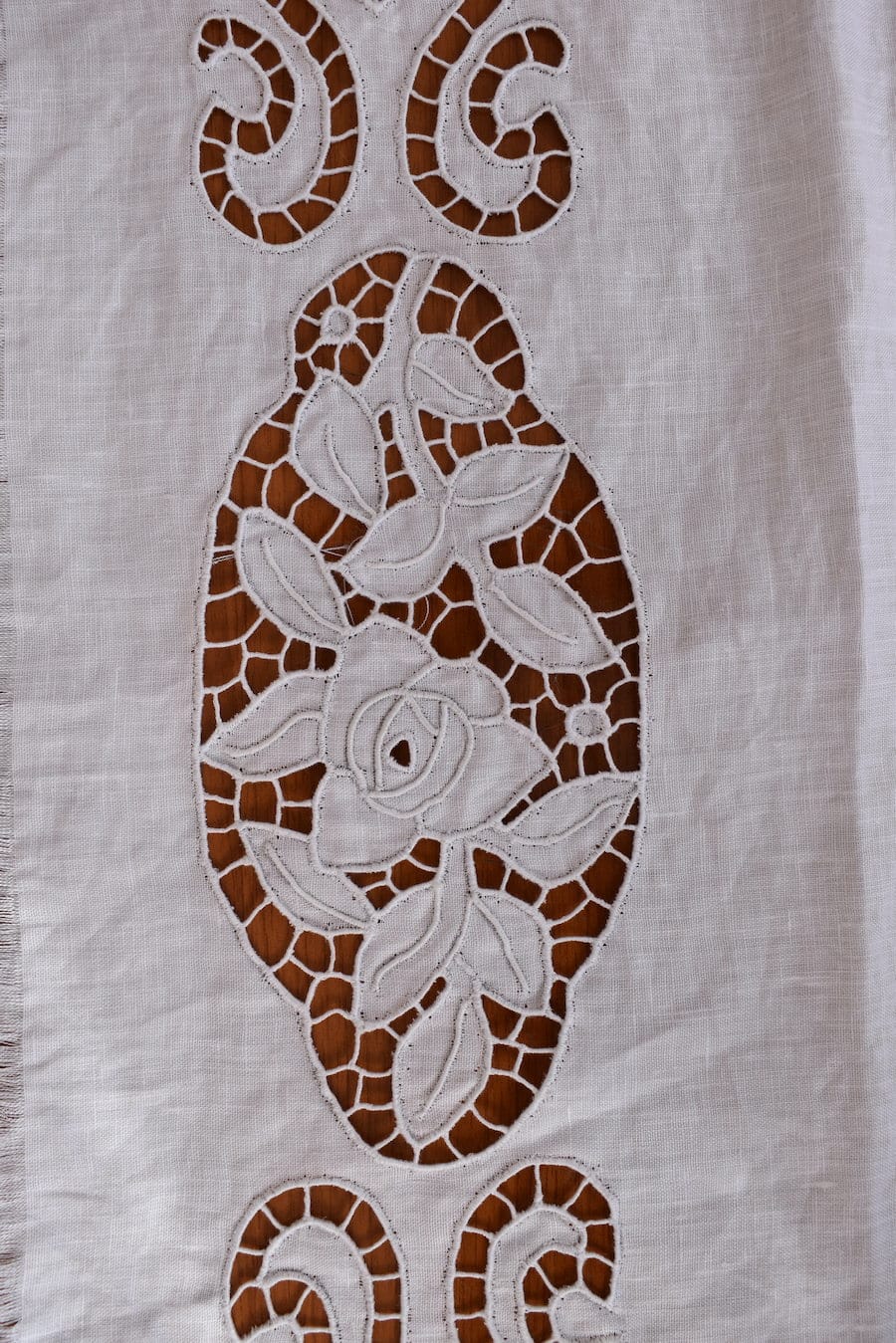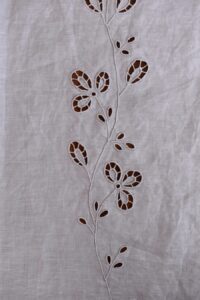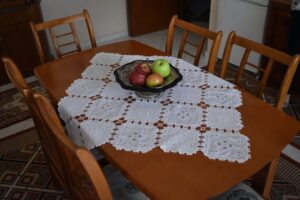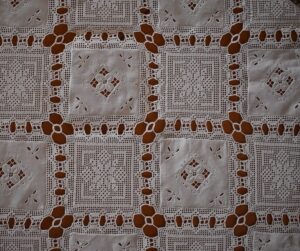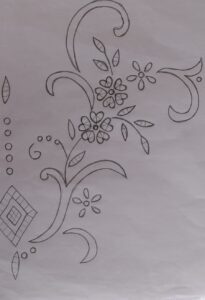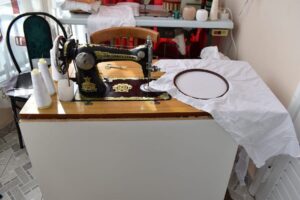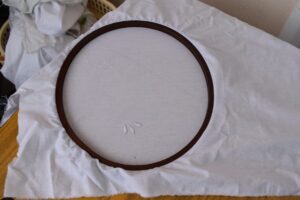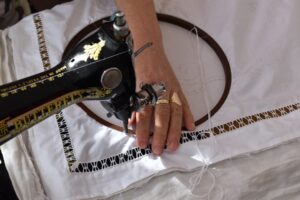As a first step, take the fabric that is measured and cut as requested, which should be all the way symmetrical. Next, mark around with a pencil equally spaced along four sides the spots where azhuri (drawn thread embroidery) will be applied. Draw out or cut portions of rows of threads along the specified width of the fabric, thereby leaving holes in it. It should be kept in mind that azhuri-type embroidery may start from the smallest width which is 0.5 cm – 3 cm. Once threads are drawn out, the next step goes on with azhuri work with groups of just drawn-out threads being clustered to be later stitched or woven together. This type of embroidery is done by attaching the fabric to a hoop.
The next step is to take tracing paper and a black pencil. The tracing paper is placed over the fabric, transferring the design already chosen. Therefore, the pattern is drawn to pass on to the next step which is embroidery. Care should be taken that while embroidering, the fabric is always inserted into the hoop, which has the property to retain the pattern and have the work about right.
The elements of embroidery are fill-in stitches and cutting through or “kofto” as derived from Greek. This type of embroidery involves also various scallop edge stitches and edge stitches. It is applied with a thick thread on the front side, so that the work leaps to the eye, come out flat, and is nice-looking.
The thread used is especially important during embroidery, as it is key to the quality of the product obtained and the lastingness of this element.
Machine embroidery
Machine embroidery of the element is achieved by plying 2 threads, one that is passed through the machine’s shuttle and the other through its needle. The thread used in the shuttle should be no. 36, while the other users in the needle should be no. 56. This is very important as the workpiece comes out successfully completed and impeccable.
Having finished with the embroidery, the fabric is released from the hoop, leftover small threads are picked up, hence a “kare” (square tablecloth) is produced as requested by the customer.

